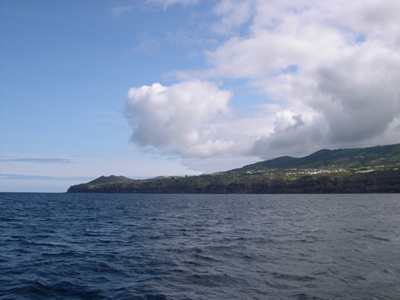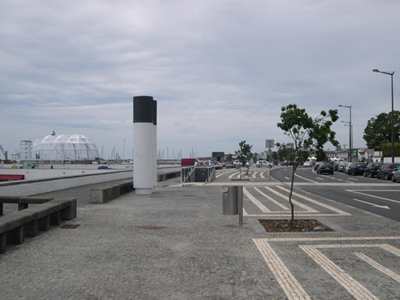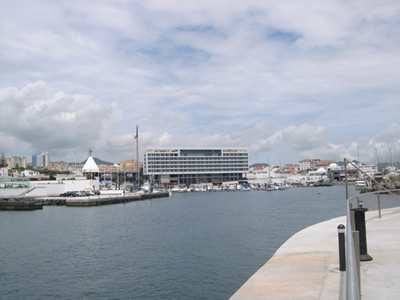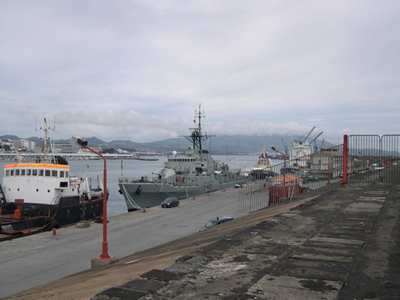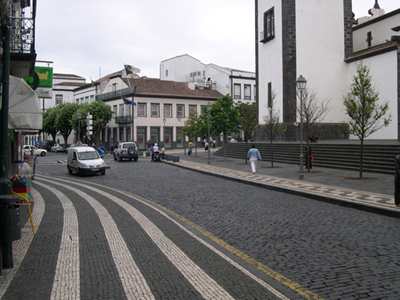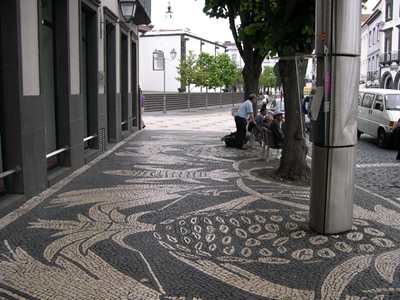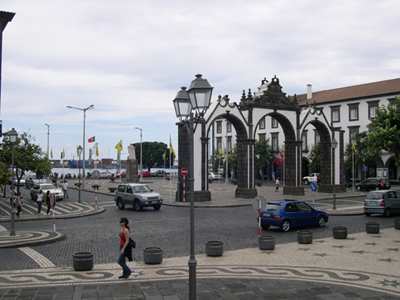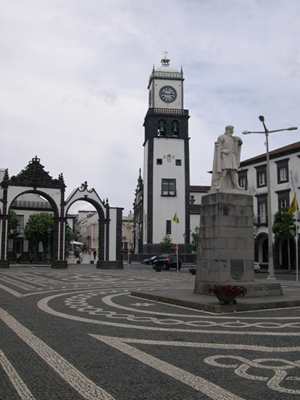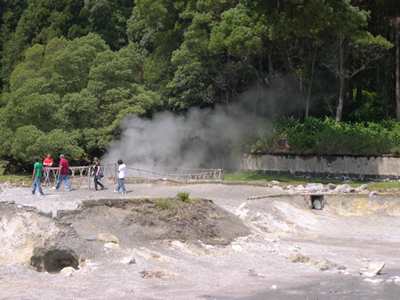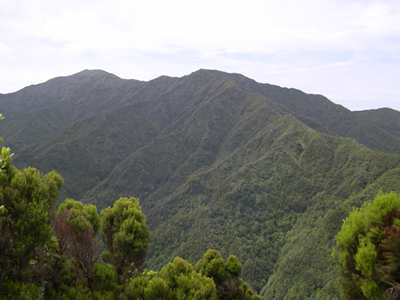Sao Miguel

|
About the last significant event
of our stay in Our berth in Praia da Vitoria, being on
the outside of the wavebreaker on the south side of the marina, would not have
been a good place to remain in a fresh wind from the S or SW. Since exactly this
was forecast for June 25th and 26th, we debated the pros
and cons of anchoring near the commercial port at the S end of the bay. We both
agreed that it would be better to sail the 90 miles to
This all lies to the west of the old marina (Pêro de Teive) the two being separated by a T-shaped spur with a liner and ferry berth on the outside and restaurants and shops on the inside. Virtually all visiting boats are berthed in the new marina, but the concrete reception pontoon is still in the entrance to the old marina
so, after checking in and being allocated a
berth, one has to motor right round the liner berth to reach the new pontoons.
Although (or the guide perhaps because)
Although the eastern part of the
waterfront has had serious modernisation, the western part is elegant with some
fine architecture. The streets are cobbled with pavements patterned in black and
white (a feature of the whole Portuguese world).
The fine square with the town arch at its landward end was the original harbour before the first breakwater gave a bigger sheltered area.
The guy whose statue overlooks it is Gonçalvo Velho Cabral.
He was a graduate of the navigation school
founded at Sagres in the The marina celebrated its first
birthday this weekend. Jollities
included a concert by Roger Hodgson from Supertramp on Friday evening – lots of
singing along to Breakfast in America et al from the boat, and there is supposed
to be a Giant Cake today, although where and when (and even what) remains
mysterious so far. (Note next day - we got
a couple of slices!). We have done well with town celebrations on this
trip; we still remember the 130th anniversary of Mindelo, CV, with
great affection. As well as meeting boats that we have seen elsewhere, we have had the pleasure this week of spending some time with Berend and Teresa Hillen, whose plans are for a week’s hotel followed by a week on Amoret. Apart from a reunion with old friends who we haven’t seen for some years, we were able to share their hired car for a couple of days to visit the remoter parts of this quite large island. Our first excursion called first at Furnas, where an impressive display of volcanic steam vents and pools of boiling mud has been exploited by canny locals as a means of cooking stew that is served up to visitors in the nearby restaurants.
We then took the mountain
road near Pico da Vara at the E end, leading to a spectacular viewpoint where we
not only gawped at the mountains and forest but also sighted a rare bird species
unique to
Berend and Teresa come aboard
tomorrow (Mon 6th); the weather looks suitable for a trip down to
Santa Maria, the other island of the eastern group about 50 miles to the SSE.
|
